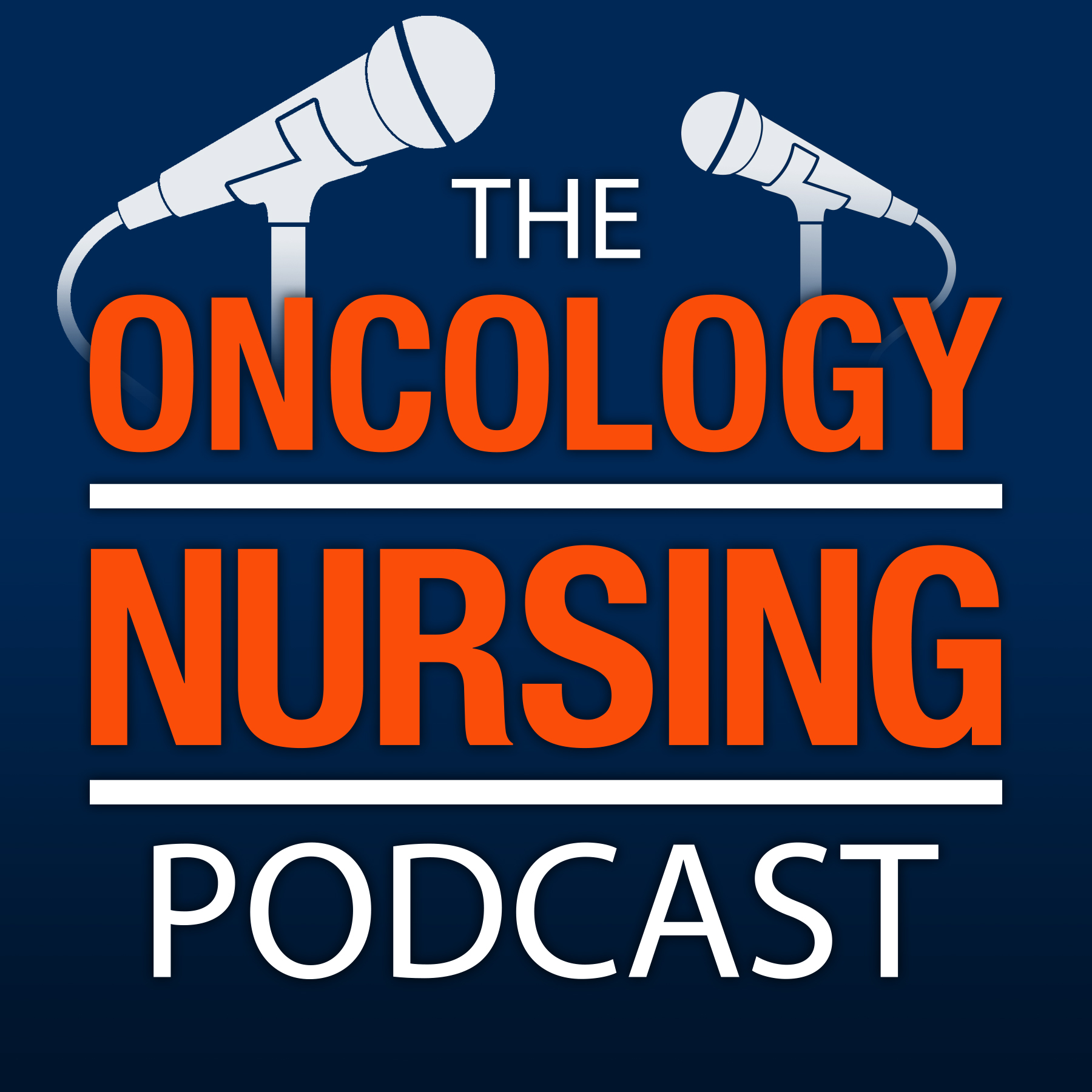
Episode 223: Oncologic Emergencies 101: Superior Vena Cava Syndrome

The Oncology Nursing Podcast
Shownotes Transcript
“I think that we as nurses need to advocate when a patient is uncomfortable. And it’s not your classic ‘pain in my hip’ kind of thing. This is a more subtle, ‘I can’t breathe, I have a sense of impending doom, I’m panicked, I want someone beside me.’ It may sometimes appear to be a psychosocial coping issue when it really is a physiologic one,” ONS member Brenda Shelton, DNP, RN, AOCN®, clinical nurse specialist at Johns Hopkins Medicine in Baltimore, MD, told Stephanie Jardine, BSN, RN, oncology clinical specialist at ONS. Shelton discussed the warning signs of superior vena cava syndrome and nursing considerations for its management. This episode is part of a series about oncologic emergencies; the others are linked in the episode notes. You can earn free NCPD contact hours after listening to this episode by completing the evaluation linked below.
Music Credit: "Fireflies and Stardust)" by Kevin MacLeod
Licensed under Creative Commons by Attribution 3.0 The planners and faculty for this episode have no relevant financial relationships with ineligible companies to disclose. ONS is accredited as a provider of NCPD by the American Nurses Credentialing Center’s Commission on Accreditation.
Episode Notes
The NCPD activity for this episode has expired, but you can still earn NCPD through many other Oncology Nursing Podcast episodes. Find a full list of opportunities).
Other Oncology Nursing Podcast episodes on oncologic emergencies)
Clinical Journal of Oncology Nursing articles:
STAT: Superior Vena Cava Syndrome)
Superior Vena Cava Syndrome: An Education Sheet for Patients)
ONS book: Understanding and Managing Oncologic Emergencies: A Resource for Nurses (third edition))
ONS courses:
Oncologic Emergencies)
Treatment and Symptom Management—Oncology RN)
Essentials in Oncologic Emergencies for the Advanced Practice Provider)
ONS Huddle Cards™)
Information from the National Cancer Institute)
Information from Cancer.net)
To discuss the information in this episode with other oncology nurses, visit the ONS Communities).
To provide feedback or otherwise reach ONS about the podcast, email [email protected]).
Highlights From Today’s Episode
“Superior vena cava syndrome was first recognized with tuberculosis, and now it’s almost exclusively going to occur in patients with cancer because it’s physiologically the outcome of too much mass in between the sternum and the spine.” Timestamp (TS) 01:57
“You might see some very subtle right arm heaviness, edema; you might see a prominent right antecubital, or prominent veins on the hand of the right arm, or a prominent right jugular vein. But these are all things that can be subtle, and the patient may present with aching of the arm, numbness or tingling of that arm, just really things that don’t necessarily raise your awareness because it’s not the classic signs or symptoms you see in your textbooks.” TS 05:35
“When we think of superior vena cava syndrome, we associate it with upper body edema, particularly worse in the morning when somebody rises after having laid flat for all night. . . . But the thing that patients report the most is dyspnea. It is not necessarily entirely due to respiratory problems. In this case, it’s due to compression of the vena cava and an alteration of the blood returned to the heart that leads to an altered cardiac output.” TS 06:45
“The three biggest life-threatening complications I think about are airway incompetence, cardiovascular collapse, and clotting. As you compress the vena cava, you are going to diminish the blood return into the heart, and this is going to compromise your ability to oxygenate that blood and put it back out the other side.” TS 08:46
“We always start with a total body assessment, and it’s hard because this patient is going to present with potentially neurologic symptoms, cardiac and respiratory symptoms, as well as just generalized discomfort and constitutional symptoms. You know, we’re so focused sometimes on febrile neutropenia and the very classic complications, that this one is a little more subtle. And so the nurse needs to be very comfortable with their cardiovascular assessment in general and be looking at vessels and be looking at jugular venous distention and pulsations.” TS 15:32
“I think that we as nurses need to advocate when a patient is uncomfortable. And it’s not your classic ‘pain in my hip’ kind of thing. This is a more subtle, ‘I can’t breathe, I have a sense of impending doom, I’m panicked, I want someone beside me.’ It may sometimes appear to be a psychosocial coping issue when it really is a physiologic one.” TS 17:16
“We often think of this as something that is a sign of terrible, bad, irreversible disease, when in fact, it could be the presenting symptoms.” TS 19:32